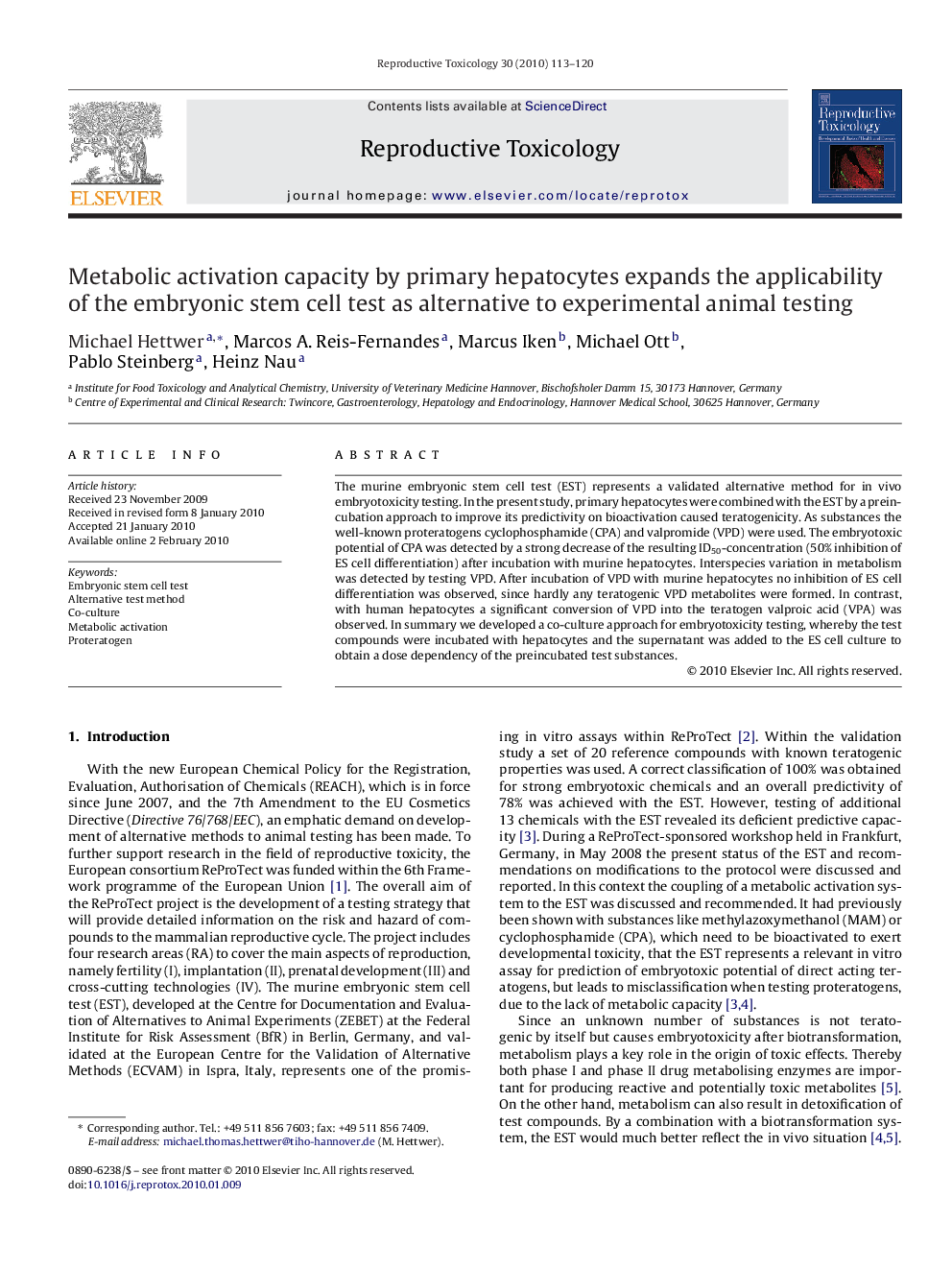| Article ID | Journal | Published Year | Pages | File Type |
|---|---|---|---|---|
| 2594321 | Reproductive Toxicology | 2010 | 8 Pages |
The murine embryonic stem cell test (EST) represents a validated alternative method for in vivo embryotoxicity testing. In the present study, primary hepatocytes were combined with the EST by a preincubation approach to improve its predictivity on bioactivation caused teratogenicity. As substances the well-known proteratogens cyclophosphamide (CPA) and valpromide (VPD) were used. The embryotoxic potential of CPA was detected by a strong decrease of the resulting ID50-concentration (50% inhibition of ES cell differentiation) after incubation with murine hepatocytes. Interspecies variation in metabolism was detected by testing VPD. After incubation of VPD with murine hepatocytes no inhibition of ES cell differentiation was observed, since hardly any teratogenic VPD metabolites were formed. In contrast, with human hepatocytes a significant conversion of VPD into the teratogen valproic acid (VPA) was observed. In summary we developed a co-culture approach for embryotoxicity testing, whereby the test compounds were incubated with hepatocytes and the supernatant was added to the ES cell culture to obtain a dose dependency of the preincubated test substances.
